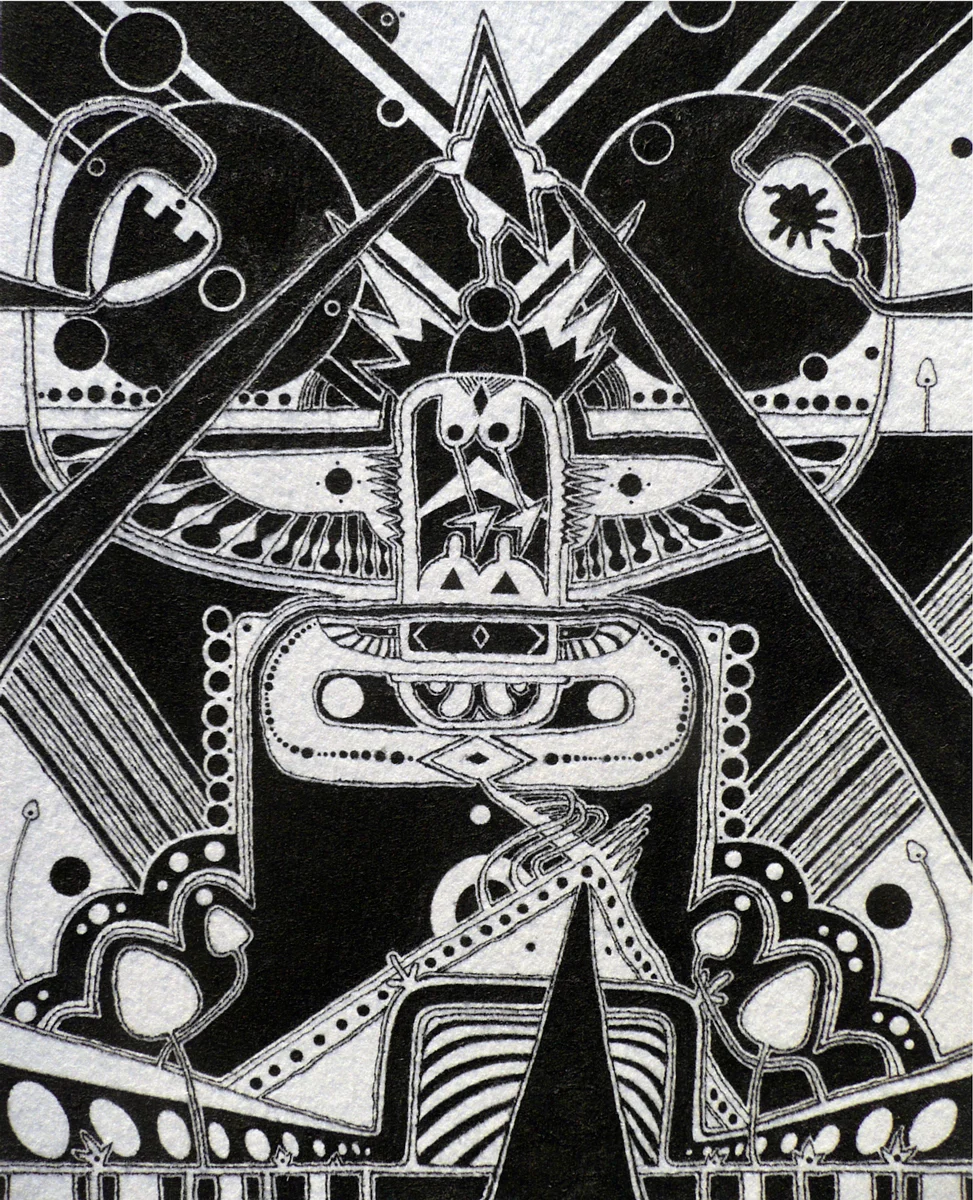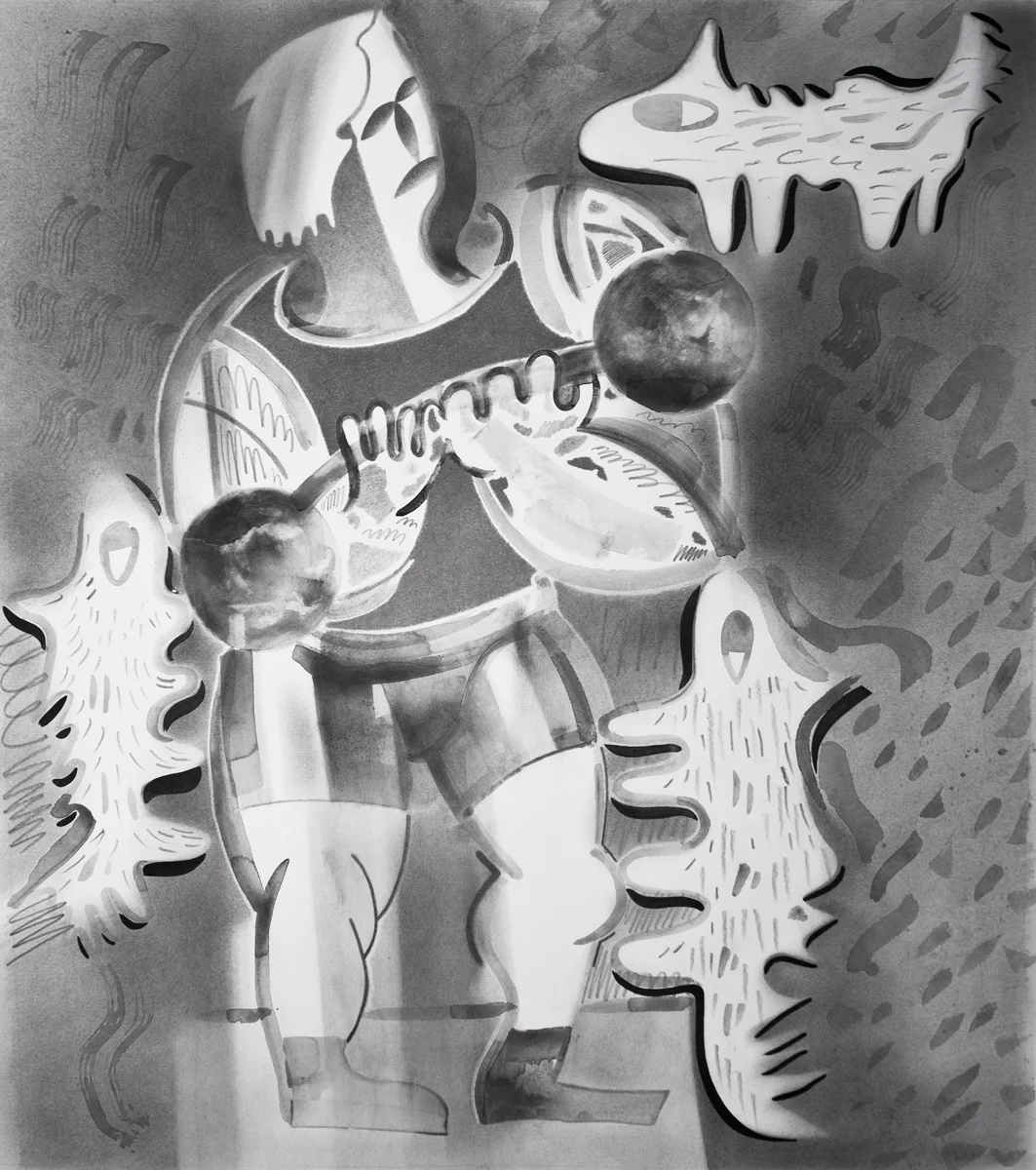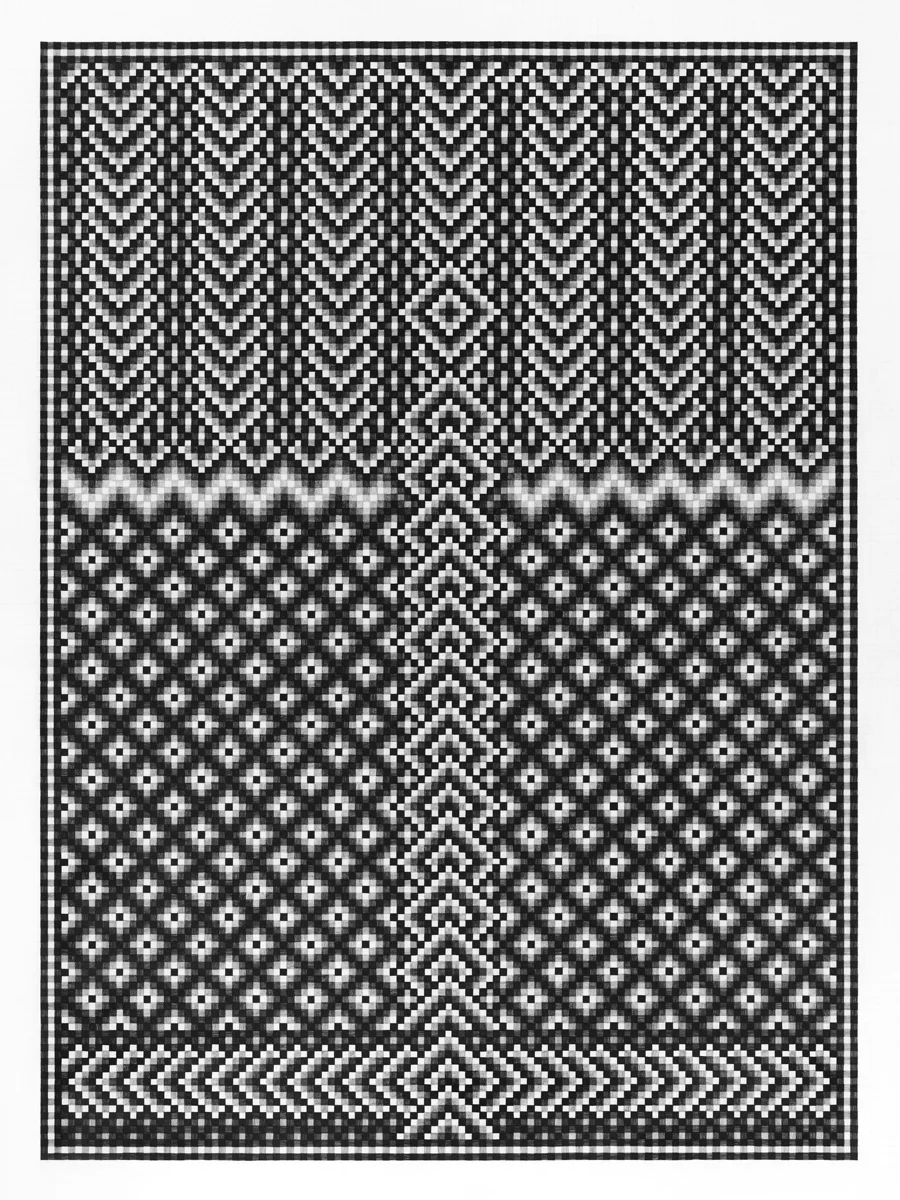
NATHAN HAYDEN. “DIAMOND FUNKY IN THE IMAGINARY FUTURE,” (2012). INK ON INDUSTRIAL FELT. 28 X 23 INCHES. COURTESY CB1 GALLERY, LOS ANGELES.

BRIAN SCOTT CAMPBELL. “OLYMPIAN WITH DOGS (1 OF 3),” (2014). GRAPHITE AND INK ON PAPER. 32 X 28 INCHES. COURTESY CB1 GALLERY, LOS ANGELES.

“MAN IN LANDSCAPE 4: THE FLOOD,” (2013). GRAPHITE ON BRISTOL. 25 X 18 INCHES. COURTESY ERIC BELTZ.
[](#)[](#)
Phantom Color
In Some Primitive Cultures Artists Are Still Revered
_Man’s highly developed color sense is a biological luxury—inestimably precious to him as an intellectual and spiritual being, but unnecessary to his survival as an animal._ —Aldous Huxley, _The Doors of Perception_
The psychedelic experience, that ineffable realm of various altered states, is not the exclusive domain of the pagan revivalist or recreational psychonaut. Every day, we’re prone to perceiving any number of naturally occurring (non-psychotropic) hallucinations and delusions—scintillating scatoma, hypnagogic hallucinosis—that challenge our biological capacity to deal with the world. Phantom Color is a group art show that brings together three artists—Eric Beltz, Nathan Hayden, and Brian Scott Campbell—who playfully plumb these aberrant spaces, creating intricate, funny, and feverish works using a monochrome palette of white, black, and gray.
Despite (or in spite of) the show’s absence of color, a diversity of styles and motifs abound, from Beltz’s apocryphal cross-stitch patterns, to Campbell’s languorous figures and id abstractions, to Hayden’s elaborate ink drawings based on dance-induced visions. While the works are held together superficially by their commitment to grayscale, the artists themselves are linked through friendship, a fascination with alternate realities, and a shared loyalty to Santa Barbara, their present locale. “I thought this show would make a positive and hopefully powerful statement,” says Beltz, the show’s informal organizer, “about us as a friend group, as peers, and as artists who share a common palette, and who all happen to live in the same city near, but not in, Los Angeles.”
Running from June 15th through July 20th at CB1 Gallery in Downtown L.A., the title of the show references a visual phenomenon that occurs when the eye—limited to value contrast (black and white) and denied of color—nonetheless sees pink, blue, and yellow auras along an image’s high contrast edges, an optical aberration these artists use to metaphorically point to a sensorial world beyond our physical adaptations, where the unseen is seen, and what’s seen is illusion.
